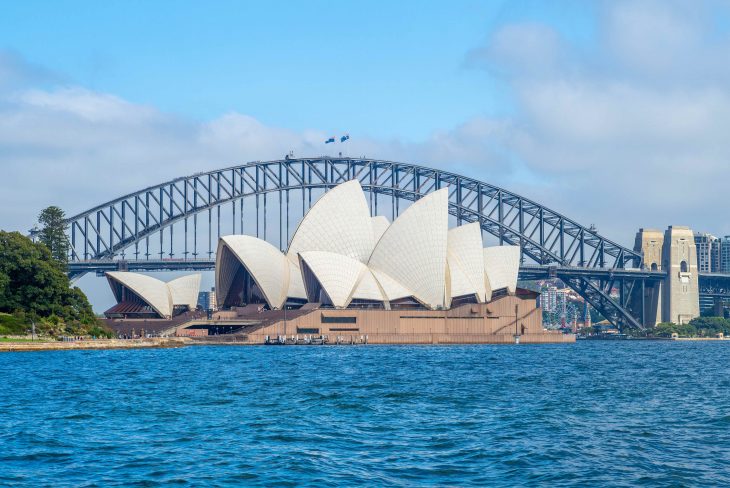
The Sydney Opera House is one of the most famous UNESCO World Heritage Sites and tourist attractions in the world. In fact, no trip to Sydney is complete without a visit to this iconic performing arts center. Sitting next to the Sydney Harbour Bridge and Royal Botanic Garden, this Australian landmark has something to offer to visitors of all ages, thus making it a memorable experience. Experience a glimpse of the culture and history of the famous Sydney Opera House with these fascinating facts.
- The Sydney Opera house has an elevation of 13 feet.
- The coordinates to the Sydney Opera house is 33°51′31″S 151°12′51″E.
- The construction for the Sydney opera house began on March 1st, 1959.
- The Sydney Opera House was completed in 1973.
- At the time, the Sydney opera house cost around 102 million USD to build.
- The Sydney Opera house is famously known as a multi-venue used for performing arts.
- The famous landmark is located at the Sydney Harbour in New South Wales, Australia.
- This landmark is also considered to be one of the most famous buildings of the 20th century.
- The Sydney Opera House was designed by Jorn Utzon, a Danish architect.
- The design for the opera house also received an award for an international design competition.
- The Sydney Opera House also surrounds the entire Bennelong Point at Sydney Harbour.
- This opera house also hosts over 1,500 performances each year.
- Over 8 million tourists come to visit the Sydney Opera House each year.
- The Sydney Opera House is managed by the Sydney Opera House Trust agency.
- The landmark became a UNESCO World Heritage Site On the 28th of June in 2007.
- More than 1.2 million people come to see several performances at the Sydney Opera House.
- The performances at the Sydney Opera House are performed by several performing groups.
- The Sydney Opera house is also considered to be one of the most popular tourist spots in Australia.
- The Sydney Opera House was also a finalist in the New 7 Wonders of the World campaign list.
- The architecture style of the landmark is inspired by expressionist architecture.
Originally, over 230 designs were submitted for the design of the Sydney Opera House.
In 1956, an international competition was held to choose a winning design for the construction of the Sydney Opera House. During that time, exactly 233 designs were submitted during the competition from several major architectural firms from all over the world.
After some time, a winner was announced and the design submitted by Jorn Utzon was chosen for the design of the Sydney Opera House. The design was initially described as sculpture-like due to the changing shapes in several directions of the building.
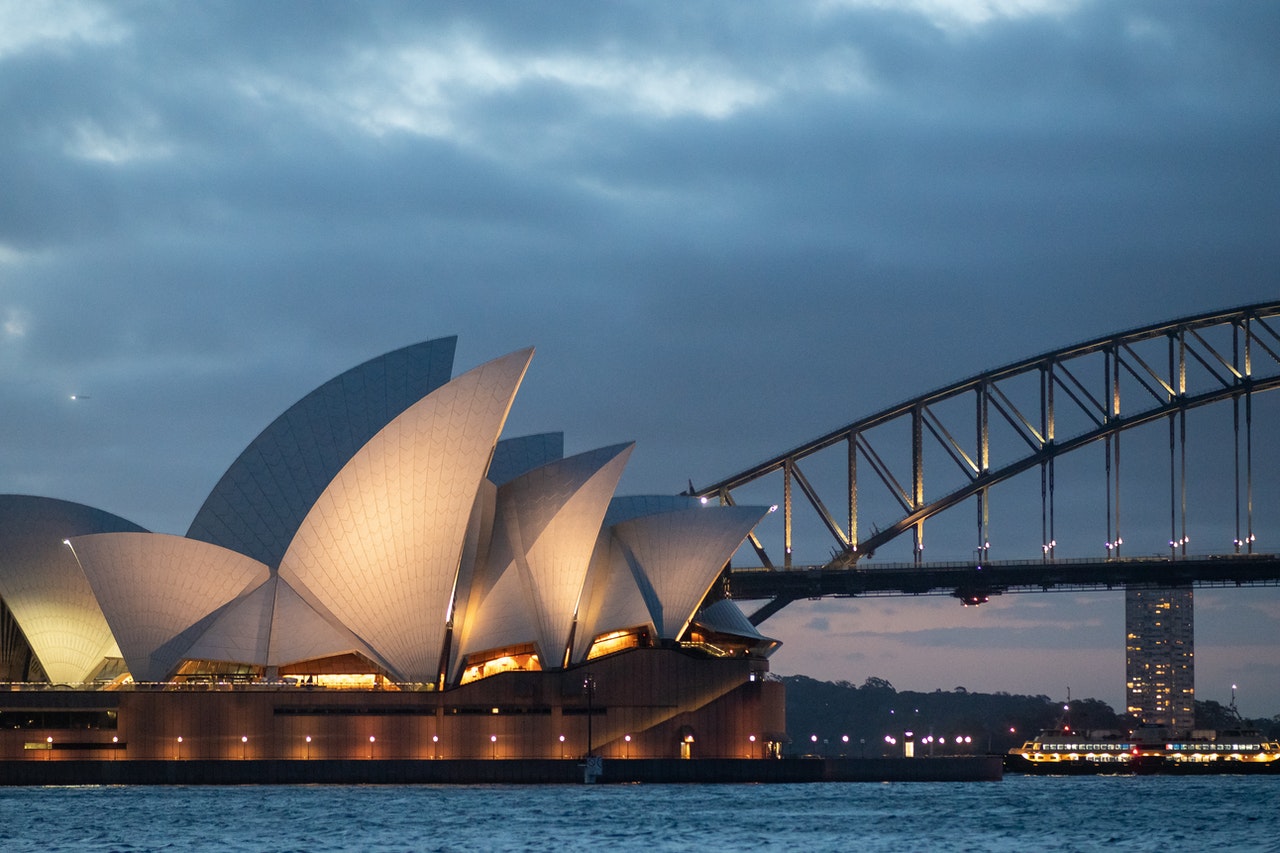
The concrete ceilings of the Sydney Opera House are shaped differently depending on the location.
The design for the Sydney Opera House was designed by Jorn Utzon while keeping his design principles in mind. The sculptural roof of the Sydney Opera House is one example as it was designed in a way that would emphasize the heavy mass of plateau below it while concerning the harbor around it.
Additionally, the tiles on the roof of the Sydney Opera House are subdivided into different segments that are structured similarly to the shape of a leaf. Overall, the final design for the Sydney Opera House is themed to fit the surrounding area it is settled in which in turn, adds to the appeal of the location.
Props at the Sydney Opera House are often moved by mechanical stage lifts.
One of the things that make the Sydney Opera House special and different from other theatre houses is that its scenery and props are typically stored underneath the floors of the stage. To reveal these sceneries onto the main stage, the Sydney Opera House makes use of large stage lifts to pull the props up onto the stage for theatrical performance.
However, these lifts also have a travel limit which is around 200 mm above the stage floor. Additionally, a portable ramp is also used to roll off the scenery to stage level.
The first person to perform at the Sydney Opera House was Paul Robeson.
In 1960, the first performance at the Sydney Opera House was held and featured Paul Robeson who climbed the scaffolding of the Sydney Opera House and sang ‘Ol’ Man River’. At the time, Paul Roberson was noted to be singing to the construction workers at the Sydney Opera House who at the time were taking their lunch breaks.
At the time, the construction workers were left in awe over the performance which was also recorded and later on was covered by local newscasters.
Over 10,000 construction workers were hired to build the Sydney Opera House.
The construction of the Sydney Opera House began in 1959 where over 10,000 construction workers were hired to build the plans for the building in a schedule of 4 years. However, as time went on, the design for the Sydney Opera House proved to be more difficult to achieve than planned which led to years of delay in the construction schedule.
During the process of construction until its completion in 1973, a total of 16 construction workers were said to have lost their lives during the project due to accidental falls while on the job.
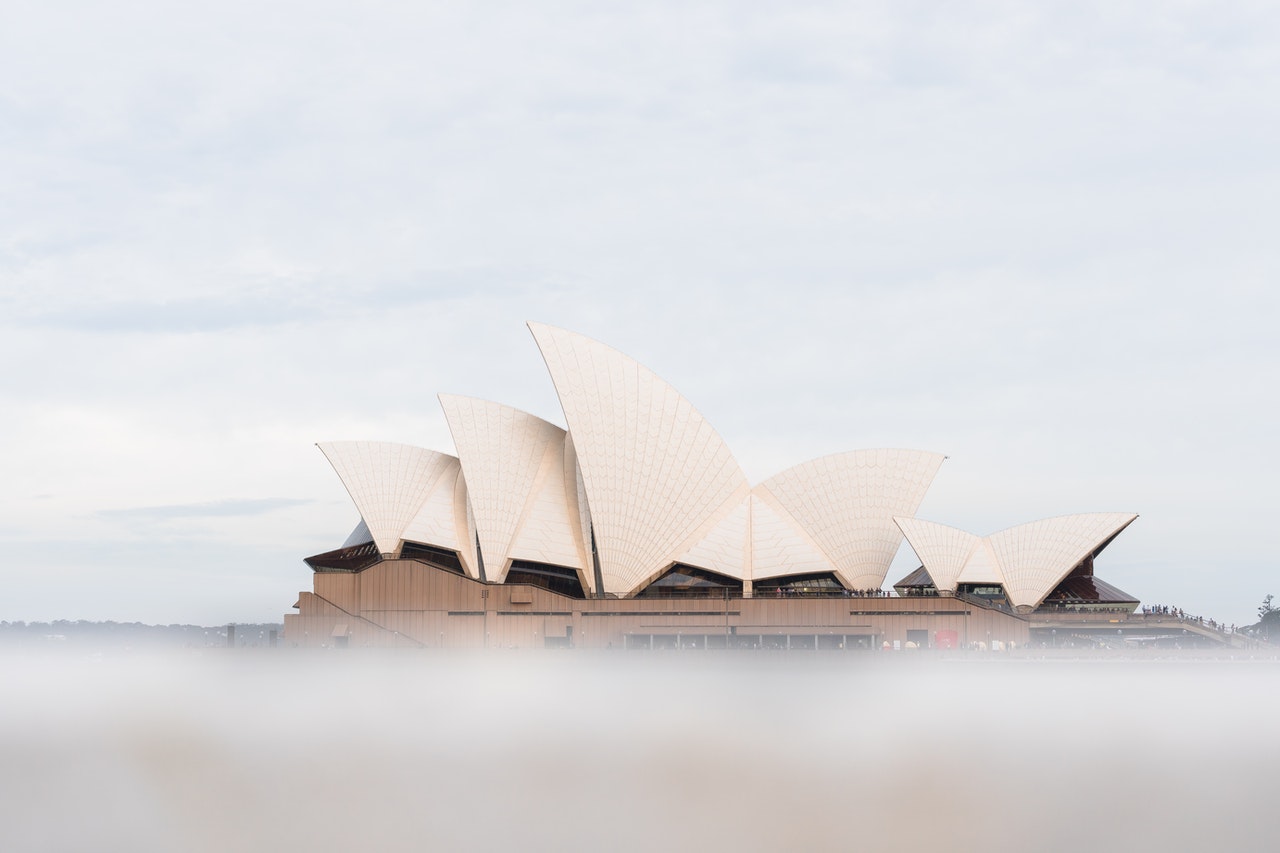
The Sydney Opera House is only closed on two days each year.
According to the official website of the Sydney Opera House, the building is open 363 days a year to the public and is open 24 hours a day to visitors. The only days that the Sydney Opera House is closed for the day is during the 25th of December and on Good Friday.
The Sydney Opera House has continued to maintain this schedule since its first opening in 1973 where visitors are free to come and tour around the Sydney Opera House at any day of the year when it is most convenient for them. However, in the event of any major natural disasters and extreme weather, the Sydney Opera House will typically remain closed to the public for safety reasons.
The Sydney Opera House also has an opera that is written about it.
The opera is titled The Eight Wonder and was an opera by Alan John which tells the story of the Sydney Opera House itself. The Eight Wonder first premiered at the Sydney Opera House in October of 1995 while in the presence of the composer and as well as its librettist, Dennis Watkins.
Additionally, the story of this opera also involved characters in political roles, architects, engineers, and as well as a conductor which would help tell the tale of how the Sydney Opera House was built and presented to the world. Additionally, critics have also stated that the opera itself leaves its audience in a sense of loss for the complete version of the play which was never released to the public and yet also grants them a sense of gratitude for the completion of the Sydney Opera House itself.
Each of the sails on the Sydney Opera House cost around 100,000 USD each.
According to the original construction plans of the Sydney Opera House, each of the sails was built with the use of 3 tower cranes that were made in France. Each of the sails was accustomed to the specifications for the design of the Sydney Opera House which totaled 100,000 USD for each sail.
Additionally, the Sydney Opera House is also said to be the first building in the country of Australia that made use of tower cranes during its construction.
Visiting the Sydney Opera House is free to all visitors.
Here’s another fun fact that everyone will love! The Sydney Opera House allows visitors to enter its premises for free and also allows them to explore the location for as long as they wish to.
During the day, visitors can also visit the foyers inside of the Sydney Opera House and as well as pay a visit to the box office located on-site. The fact that visiting the premises of the Sydney Opera House is free results in several tourists coming to see the famous world heritage to snap a photo and enjoy a day of culture and class.
On average, performers at the Sydney Opera House walk an average of 18,681 steps a day on stage.
This is equivalent to 13 kilometers! Additionally, this also includes stagehands, operating teams, and as well as tourism teams that work at the famous Sydney Opera House.
Additionally, the Sydney Opera House also hires recruits and offers several other possible positions that keep the Sydney Opera House operating nearly every day of the year. There are also special loyalty awards given to those employees who have been working at the Sydney Opera House for 50 years and over.

You can also take a paid tour of the Sydney Opera House during the day.
To get more information out of your visit to the Sydney Opera House, the landmark also offers paid guided tours that allow you to immerse yourself in the history and details behind the making of this famous opera house. Additionally, audio guides are also available for those who wish to take their time and control the pace of their tours and are also available in several foreign languages apart from English.
Typically, tours for the Sydney Opera House cost around $42 per person and last an hour if opted to be taken around by a tour guide. Some tour packages also include meals at the restaurants located at the Sydney Opera House and also allows visitors to visit gift shops and buy memorabilia for themselves or friends and family.
The original budget allocated for the Sydney Opera House was 7 million USD.
Originally, the allocated budget to build the Sydney Opera House was estimated at around 7 million USD. However, due to the complications of the design for the Sydney Opera House, the construction schedule was set back several years, which in turn also caused a need for a larger construction budget for the building.
Upon its completion, the Sydney Opera House cost a total of 102 million USD to fully construct which was mostly paid off by winning the prize from a State Lottery.
Patrons that arrive late to a show at the Sydney Opera House can come in during the allocated program breaks.
To avoid disturbances during the performances, the security at the Sydney Opera House does not allow those who arrive late to a show to enter the theatre while the performance is ongoing. Instead, patrons may sit in a designated area where they can watch the ongoing performance on a screen in the foyer.
Once the allocated break times arrive, the late visitors can be escorted to their designated seats according to their tickets and enjoy the remainder of the performance when it resumes.
The Sydney Opera House has also been featured in several films as a set point for Australia.
The Sydney Opera House is world-famous for its reputation as a UNESCO World Heritage site and as well for being one of the most famous landmarks in the country of Australia. Due to this, it has also become a common setpoint for films and other media to use to inform the audience that a particular scene is set in Australia.
Additionally, the Sydney Opera House has also been noted to be a critical reference to Australian culture.
Queen Elizabeth II opened the Sydney Opera House.
During the grand opening of the Sydney Opera House in October 1973, the opening program featured Queen Elizabeth II who officially opened the opera house to the public. Additionally, the Queen was also noted to have given a speech that enlightened the local community of the significance and meaning that the opening of the Sydney Opera House held.
It was also stated that the Sydney Opera House is proof that idealistic architecture can be achieved with the endeavor and great dedication.
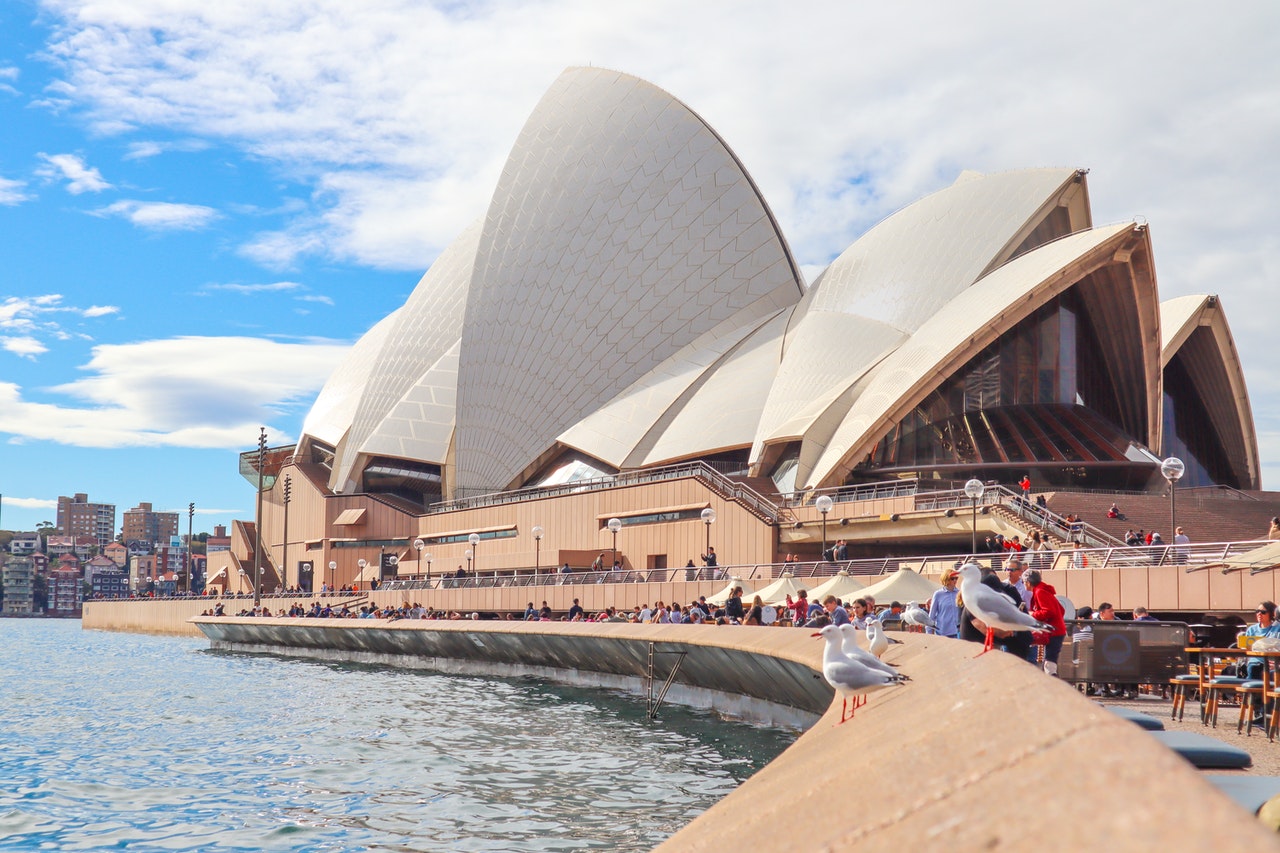
The Drama Theatre at the Sydney Opera House is one of the smallest venues among the seven.
The Drama Theatre is located on the north-western ground floor of the Sydney Opera House and is also underneath the Concert Hall. The Drama Theatre is served by the Western Foyer and is also associated with the Western Broadwalk.
There are a total of 544 seats in the Drama Theatre which are made from a birch timber veneer designed to create sightlines from all seats.
The sails of the Sydney Opera House sits on the top of a heavy podium.
These sails on the Sydney Opera House are also considered to be the largest pillar or column-free chamber in the world. Additionally, the Sydney Opera House podium was also considered to be one of the largest concrete structures in the Southern Hemisphere at the time of its construction.
The highest roof shell of the Sydney Opera House is 67 meters above the sea level.
This is equivalent to that of a building that was 22 stories up high. Additionally, the public can now access views from the Sydney Opera House sails through a virtual experience made possible by the company Samsung.
Visitors can make use of a VR headset to catch a view of the surrounding area of the Sydney Opera House from up its highest point.
The entire area of the Sydney Opera House also covers 5.798 hectares.
The largest performance hall at the Sydney Opera House houses around 2,500 seats in total with more seats available in all the other theaters in the building. Additionally, there is also an available standing room that can also house around 1,000 people at a time.
Apart from the several theatres that the Sydney Opera House houses, there are also several other facilities available to the public such as restrooms, restaurants, a box office, and many more.
There are a total of seven different performance venues at the Sydney Opera House.
The performance venues available at the Sydney Opera House are the Concert Hall, the Joan Sutherland Theatre, the Drama Theatre, the Utzon Room, the Outdoor forecourt, the Playhouse, and the Studio. However, other areas of the Sydney Opera House may also be used for smaller performances such as the northern and western foyers.
On certain occasions, small performances have also been held in the restaurants located at the Sydney Opera House.
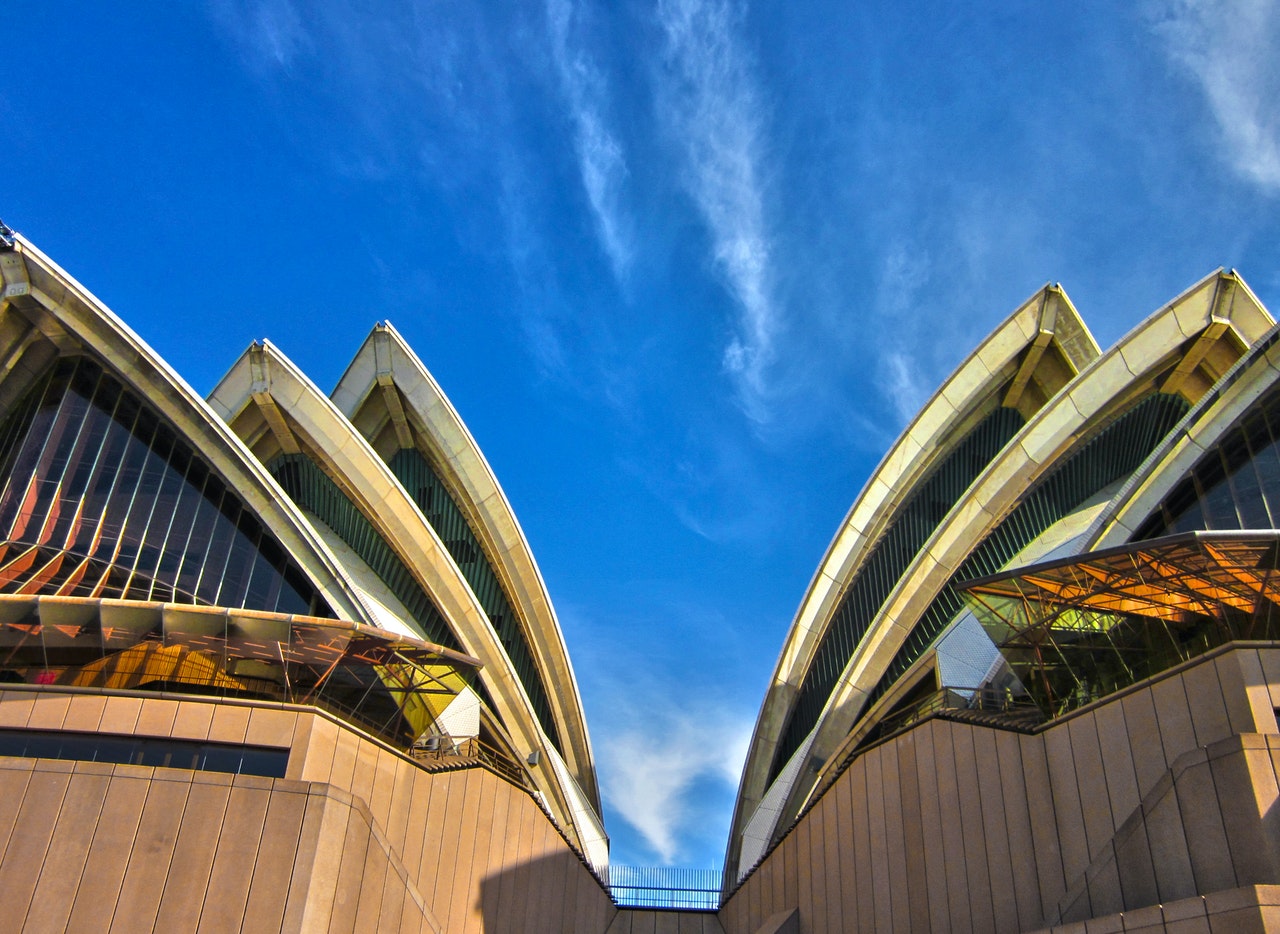
Each year on the stroke of the New Year, fireworks are lit near the Sydney Harbour each year.
During New Year’s Eve, the prepared festivities in Sydney, Australia are typically centered around the Sydney Harbour near the Sydney Opera House. Each year, a synchronized soundtrack is played during the lighting of the fireworks from the Sydney Opera House and many other locations where the theme differs each year.
As of 2011, over 1.5 million people come to watch the fireworks display live or through screens from all over the world annually.
Most of the budget attained to build the Sydney Opera House was won by the state lottery.
The Sydney Opera House was officially completed in 1973 with a total cost of 102 million USD. According to the budget plans, the allocation for the costing was approximately 5.5 million USD for the first stage of construction and 12.5 million USD for constructing the roof shells of the building. Lastly, other expenses also included the lighting budget, construction fees, stage equipment, etc.
The Playhouse at the Sydney Opera House was originally used as a cinema.
The Playhouse at the Sydney Opera House is now allocated as a space for storytelling and typically caters towards performances aimed at children. The Playhouse Theatre also seats 398 people at a time and was originally made to host orchestra recitals. On some occasions, the Playhouse Theatre can also be used for small seminars and events such as panels and interviews.
The largest recorded crowd to attend a performance at the Sydney Opera House was in 1996.
During this time, a band based in Melbourne called Crowded House performed their farewell concert at the Sydney Opera House. Their concert attracted an audience attendance of over 100,000 to 250,000 people which makes it the largest total audience that the Sydney Opera House has ever catered to.
The landmark also makes use of 6,233 square meters of glass.
The Sydney Opera House has a total of 6,233 square meters worth of topaz colored glass featured in the construction of the opera house. The glass used was made by a man named Boussois Souchon Neuvesel in France and is also the only shade of glass used by the Sydney Opera House.
Additionally, the sails on the Sydney Opera House are also believed to be the biggest pillar in the world.
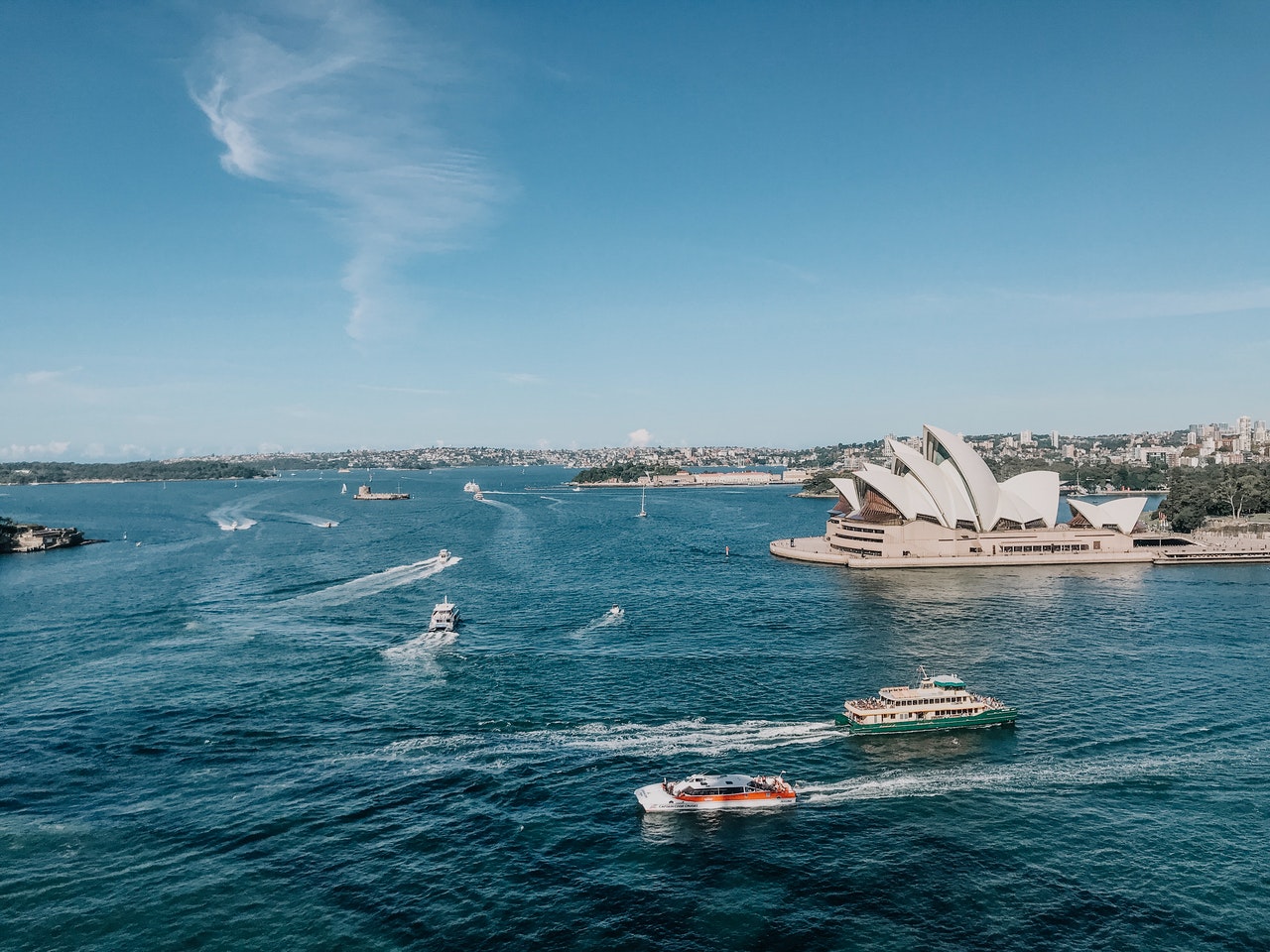
The Sydney Opera House is also considered to be one of the most photographed buildings in the world.
What makes it one of the most photographed buildings in the world is the sail-shaped sails that serve as the roof of the building. According to the architect that framed the Sydney Opera House, the design of the building is meant to seem like a school of great white sharks.
The Sydney Opera House shows that these sharks appear to be about to chomp down on their prey as they rise from the water to attack.
Some of the world’s most famous artists have also performed at the Sydney Opera House.
Many iconic performances made at the Sydney Opera House include shows done by musicians and famous theatrical groups. Additionally, other performances from celebrities such as The Drones, Paul Kelly, The National, and many more have also made it into the list of famous performances at the Sydney Opera House.
The Sydney Opera House is illuminated each night with bright lights.
Once the sun has set, the Sydney Opera House illuminates its sails with thousands of brightly colored lights in the form of shapes and images. Depending on the time of the year, the theme for its lighting changes along with the featured imagery it shows.
The Sydney Opera House also houses a few restaurants and cafes inside its building.
The Sydney Opera House offers a variety of food and drink options for its visitors to fit any budget. Among all the available choices, the Bennelong restaurant is considered to be one of the most visited dining establishments at the Sydney Opera House.
Additionally, the Sydney Opera House also offers two different bar establishments for visitors of age to relax and enjoy a drink while enjoying a night of culture at the theatre.
Originally, building the Sydney Opera House was supposed to last 4 years in total.
Despite the initial construction plans for the Sydney Opera House, construction was delayed for 10 years before its official completion. During that time, a temporary executive committee was to provide project supervision on the project.
However, due to the members of the committee not having any prior experience in the field, the project was further delayed.
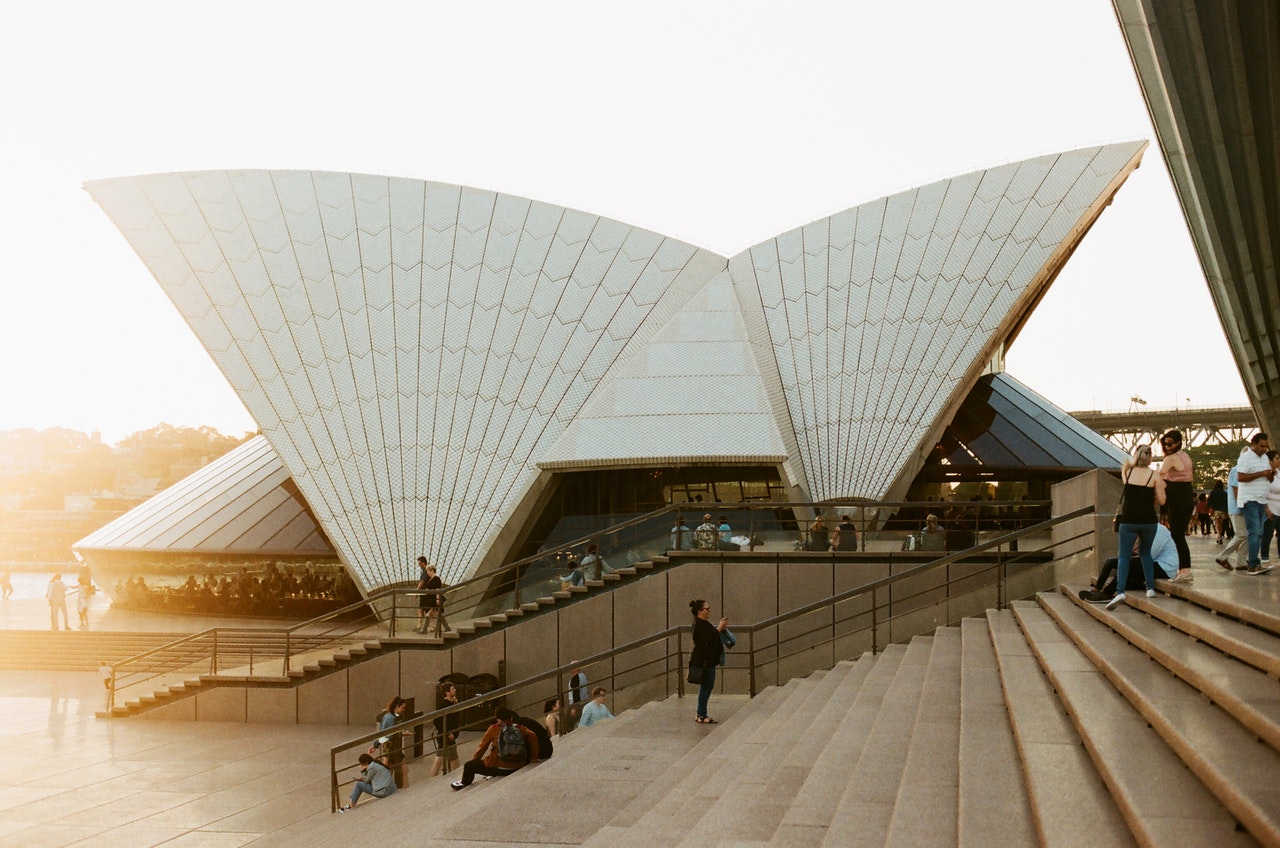
The largest venue at the Sydney Opera House is the Concert Hall.
The Concert Hall houses a total of 2,679 seats and is also considered as the main theatre at the Sydney Opera House. The Concert Hall also features a high vaulted ceiling which is also considered to be one of the most notable details of the venue.
The Concert Hall also houses the world’s largest mechanical tracker-action pipe to which there is one person in the world who can tune it.
The actor, Hugh Jackman was involved in a zip line accident at the Sydney Opera House once.
In 2010, the famous actor, Hugh Jackman attempted to glide onto the stage at the Sydney Opera House on a flying fox zipline. However, the actor failed to stop properly which led him into falling into the rigging of the set. The fall caused some debris to fall onto him and hit him in the face where his right eye was cut as a result.
The Sydney Opera House makes use of over 15,500 light bulbs each year.
Each year, all of the lightbulbs are changed with brand new ones. These lights include stage lights, ghost lights, hallway lights, and many more. At the Sydney Opera House, lighting is considered to be one of the most important aspects of giving the audience the closest feeling of authentic age-old performances.
As of 2005, nearly 89,000 performances have been held at the Sydney Opera House.
The Sydney Opera House is considered to be one of the most well-known opera houses in the world. Additionally, it is also considered to be special due to the unique architectural work of the building which further adds to its appeal. Since its opening, the Sydney Opera House hosts an average of 1,500 performances annually.
The Sydney Opera House has a total of 1,056,006 roof tiles.
The area of the roof approximately covers 1.62 hectares that sit over the structure of the Sydney Opera House. In the published design principles, Jorn Utzon stated that these tiles were a major part of the Sydney Opera House.
It was also considered important as well that these roof tiles be able to mirror the sky as part of completing its appeal.
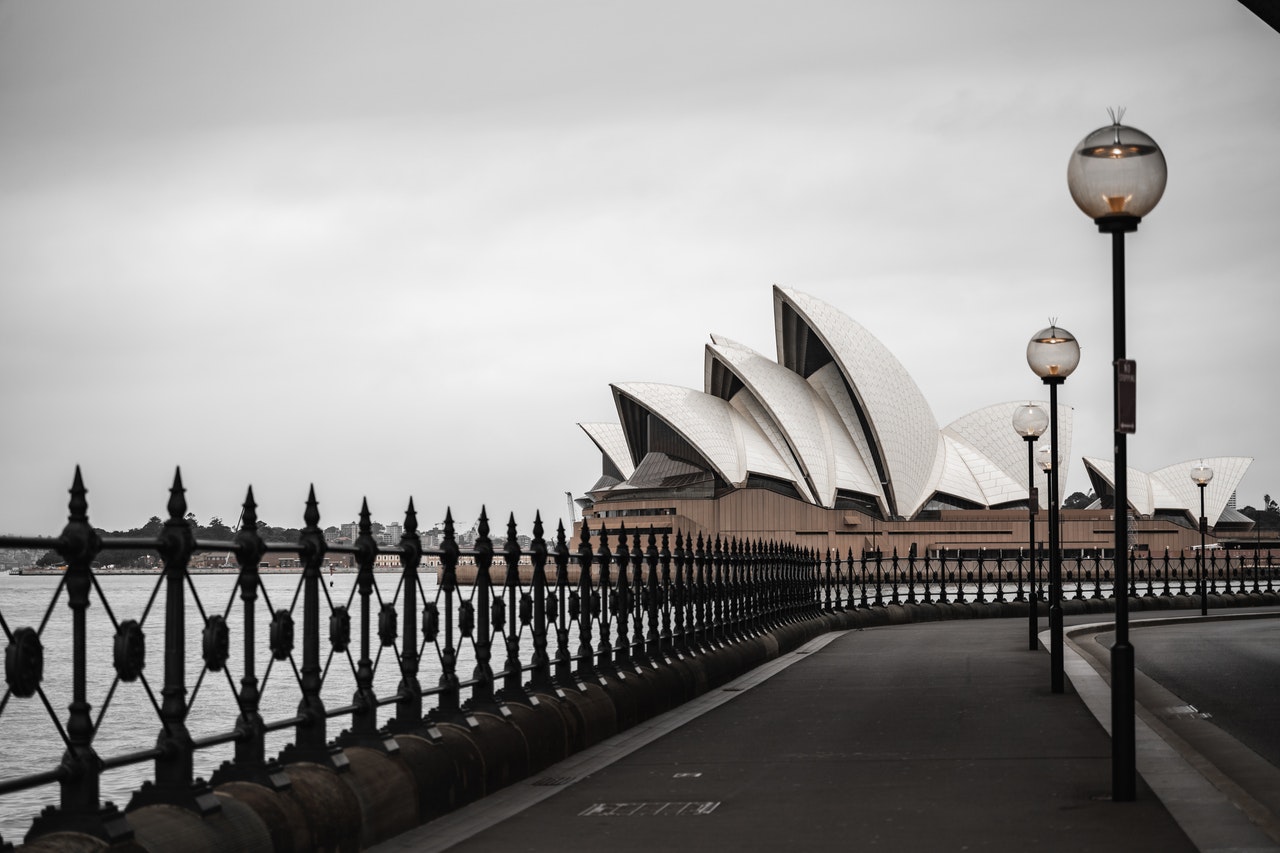
The famous bodybuilder, Arnold Schwarzenegger won his Mr. Olympia title at the Sydney Opera House.
In 1980, Arnold Schwarzenegger won his final bodybuilding award at the Concert Hall at the Sydney Opera House. During that time, the IFBB Mr. Olympia contest was hosted by Paul Graham who also awarded Schwarzenegger the title of Mr. Olympia.
Each year during the Lunar New Year, the Sydney Opera House lights its sails in red color.
During the Lunar New Year, the Sydney Opera House also features lunar lanterns and as well as mandarin tours of the building. In 2019, a total of 25,000 people came to celebrate the Chinese holiday at the Sydney Opera House.
The Grand Organ at the Concert hall is also considered the largest mechanical organ in the world.
The Sydney Opera House Grand Organ is considered to be the world’s largest mechanical tracker action pipe organ. The organ was designed by Ronald Sharp who was assisted by a man named Mark Fisher. Additionally, this organ is also often used for musical performances and as well as to provide music for theatrical plays.
The Sydney Opera House also has several programs and shows aimed at children.
The Sydney Opera House is not just for adult audiences, but for kids as well. The Sydney Opera House now provides several theatrical plays made for younger audiences. These plays are also considered to be a great way of introducing young people to the joys of theatre and performing arts.
The cooling system at the Sydney Opera House makes use of the seawater from the surrounding harbor.
This cooling system circulates the cold water from the surrounding harbor through underground pipes that span up to 35 kilometers. This water acts as both a cooling fluid used in the heating and cooling of the building.
Was this page helpful?
Our commitment to delivering trustworthy and engaging content is at the heart of what we do. Each fact on our site is contributed by real users like you, bringing a wealth of diverse insights and information. To ensure the highest standards of accuracy and reliability, our dedicated editors meticulously review each submission. This process guarantees that the facts we share are not only fascinating but also credible. Trust in our commitment to quality and authenticity as you explore and learn with us.
